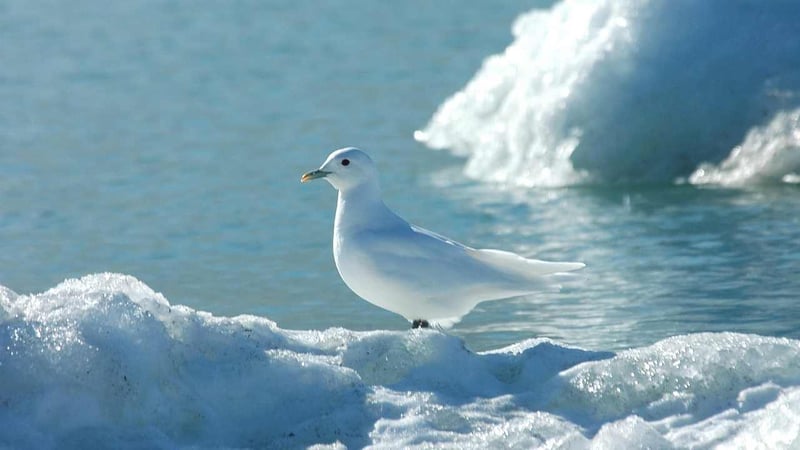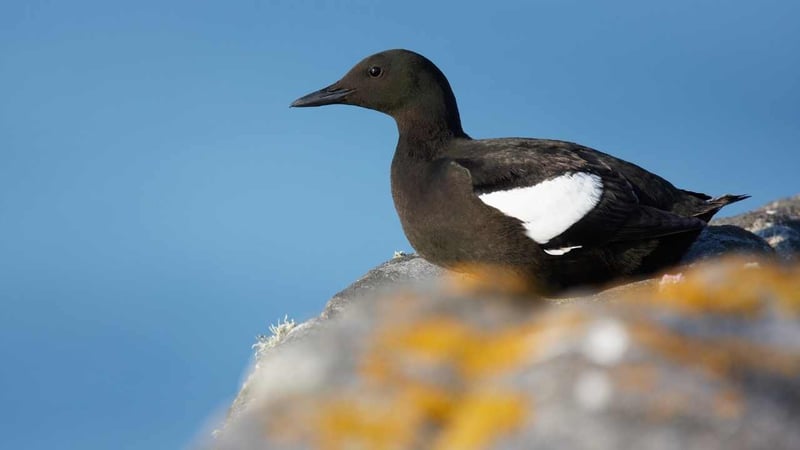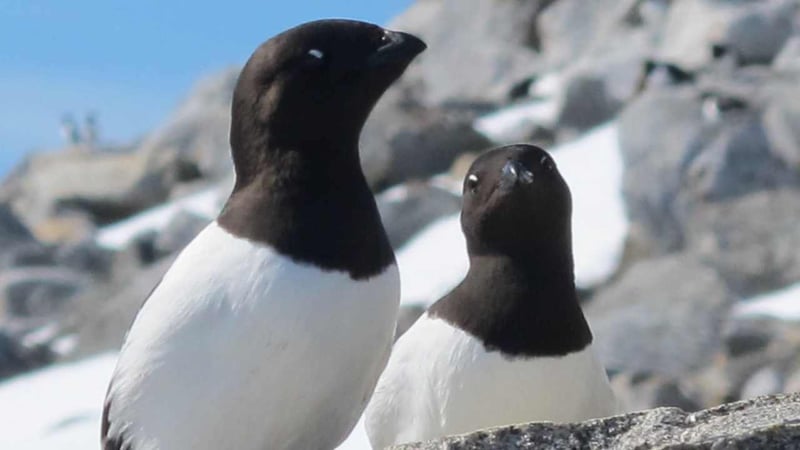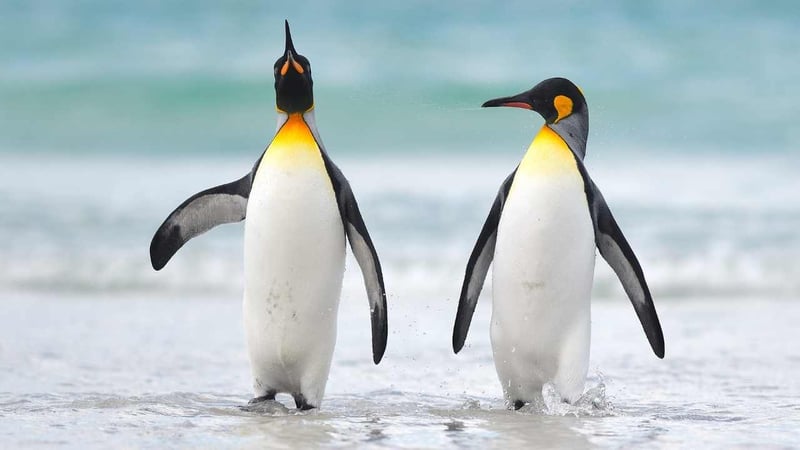Bird Day, held on May 4 each year, dates back to 1894 and is the oldest holiday celebrating birds in the US. It was established by Charles Amanzo Babcock, who was superintendent of schools at Oil City, Pennsylvania. Babcock’s intention was to foster bird conservation. To celebrate this special day, the following are some fun facts about some of the best birding routes in the world:
There are three or four iconic locations in faraway places for bird spotting: the frozen North (the Arctic), Antarctica, and South America, including the Galapagos Islands, which are about 1,000 km from continental Ecuador.
Cruise expeditions are a great way to see rare birds and a fabulous introduction for fledgeling watchers. They are usually staffed by ornithologists or keen birdwatchers who can point out species, and lectures are sometimes held on board.
Arctic Birds
.jpg?width=800&name=Polartours%20(2).jpg)
The frozen north is home to some fascinating birds. There are certain species which are a particular joy to observe in their natural habitats, even if you have already spotted them before. For example, auks in all their jolly glory. Norway is home to 30% of the world's favourite clown, the Atlantic Puffin, with an estimated population of 12 million. From May to September, 60% of them nest on icy ledges in the cliffs along the seashore. They lay a single egg, in late April or early May, and both parents incubate it. Puffins chicks, known as pufflings, are raised in burrows below ground or between rocks on steep cliffs. They moult in winter, rendering them flightless and thus more difficult to spot.
Birdspotting in Norway
.jpg?width=800&name=Polartours%20(3).jpg)
Anyone who has seen the the opening credits of the BBC series “Frozen Planet” will have caught impressive views of the Alkefjellet, the iconic bird cliff in the Hinlopen strait of Spitsbergen (and incidentally the Bråsvellbreen glacier, also on Spitsbergen). Around 60,000 pairs of breeding Brünnich's guillemots brood there. They are inefficient flyers but can dive up to four minutes, supposedly by absorbing gasses into their bones which they release into bodies.
The cliffs are also home to a smaller number of Glaucous gulls and kittiwakes and the chattering of so many sociable birds can be cheerily deafening. The location is also suitable for Zodiac trips and landings, which some cruises offer.
When the ice retreats, ships can go right round Spitsbergen and the neighboring nature reserve island of Nordaustlandet, which is glaciated and icy all year round, so good for ptarmigan. The tiny, snowflake-like Snow bunting is the northernmost land-based breeder, inhabiting any patch of tundra not covered in ice.
Birdspotting in Svalbard

The Norwegian Sea between the northernmost part of Norway and Greenland is a great place to spot seabirds outside the breeding season. The waters north of Tromso in Norway all the way to Svalbard are very rich in bird life as well as marine mammals. The largest falcon in the world, the Gyr, can be spotted off North Greenland, and Scoresby Sound on the East coast is one of largest fjord systems in the world.
The Ivory gull in the high Arctic (e.g. Spitsbergen) is a rare and endangered seabird. It has specialized to live on sea ice and is susceptible to shrinking habitats and pollution.
The white-tailed eagle, with a wingspan of over 86 inches, is the largest eagle in the world. Native birds can be spotted around Greenland and Iceland.
Other Arctic birds living in this region all year round include the Raven, Red-Legged Kittiwake, Rock and Willow Ptarmigan (the most abundant species during winter), Brunnich's Guillemot, Ross's Gull, Sabine's Gull, Harlequin Duck, Gyr falcon, Auks, Skua, and Fulmar.
Arctic ducks

There are five true Arctic duck species: the Long-tailed duck and Steller's eider, Spectacled, King, and Common eiders, also known as Cuddy duck and St. Cuthbert’s duck, which can fly up to 70 mph and breed in the far north, flying south to temperate zones in winter. Steller's eider is resident in the north all year round and threatened by climate change. The spectacularly plumed King eider is the largest duck in the north and present in flocks of over 100,000.
Black guillemot become whiter the further north they are. They also nest on cliffs in sociable big groups and winter offshore.
Divers, Gulls and Waders

The Little Auk, which can be spotted on a Svalbard cruise, is the most common Arctic bird this far north. Breeding colonies can number in the millions, enhancing the environment with guano providing fertilizer for plants to grow in otherwise barren terrain. The smallest diver is the Red-throated diver, or loon, which has threatened status and is protected. They primarily breed in the Arctic. Its throat patch is red during the breeding season and grayer the rest of the time. The only large gull in the far north is the Glaucus gull, which scavenges bird colonies for eggs and chicks.
In ancient Norse, “Fulmar” means “foul gull”. This refers to the pungent stomach oil which they spray as defense or use to nourish their young. Red phalarope (known as Gray phalarope in Europe) are wading birds which winter over on the ocean, eating lice off the backs of whales. Unusually, females are more colorful than the males. They also go south after breeding, leaving the males to incubate the eggs and raise the chicks.
The Great Northern Diver is thought to date back 20 million years and is thus one of the most primitive types of seabird. Unlike other birds, it has thick, solid bones. This gives it a good weight for diving but hampers flight. These birds can be seen floating on waters around Iceland and Spitsbergen and are easy to spot, as their handsome plumage is smart dotted rows of white on a dark and black background.
Antarctic Birds

While there might not be quite so many birds to spot in the southern hemisphere, the fearlessness of the colonies of penguins you'll find here will allow you to get even closer for that perfect photograph. On the Antarctic Peninsula, Auk lovers will enjoy the sight of beaches crowded with King Penguins and can also get close up and personal with Gentoo, Chinstrap, Adelie, Macaroni and Rockhopper penguins.
On the wing, and from the deck of your boat, you might spot huge predatory Skuas as well as Terns, such as the striking Antarctic Tern with its white body, black cap and red beak. Also in the air, or perhaps skimming the ocean's surface, are several species of Petrel and Storm-petrel, including the mischievous Pintado petrel, or Cape petrel, the black-feathered Wilsons Storm Petrel, the enormous Southern Giant Petrel and the iconic, pure white Snow petrel that usually calls the South Orkney Islands home.
Alongside Shearwaters, Fulmars and Prions, you might also spot the Antarctic Blue-eyed cormorant, otherwise known as the Blue-eyed Shag, which if you're lucky enough to see it up close, has vivid blue eyes and yellow patches at the base of its beak.
You can also follow in the footsteps of the explorer Sir Ernest Shackelton on South Georgia Island to spot shags and massive Wandering and Black-Browed Albatrosses nesting there. In total, there are eight species of albatross to be found in the Antarctic. You might also spot here the delightfully distinctive Snowy Sheathbill or Pale-faced Sheathbill, the only land bird native to Antarctica. On South Georgia, you'll also find a host of sea birds native to the island, including the South Georgia Pintail, South Georgia Shag and South Georgia Pipit.
For Arctic cruises to Iceland, Greenland and Spitsbergen visit:
To take a trip to Svalbard and back, visiting the Norwegian fjords, Lofoten Islands, Tromso and North Cape (scandinavian and Kola Peninsulas), see:
And the Svalbard Odyssey circumnavigates Spitsbergen and offers Zodiac landings and hikes.
To see penguins galore, visit:







